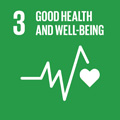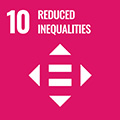- Docente: Francesco Saverio Violante
- Credits: 1
- SSD: MED/44
- Language: Italian
- Teaching Mode: In-person learning (entirely or partially)
- Campus: Bologna
- Corso: First cycle degree programme (L) in Physiotherapy (cod. 8476)
Learning outcomes
At the end of the course, the students will know the general concepts of the Occupational Medicine. Particular attention will be devoted to the healthcare work environment.
Course contents
The course is divided into three parts (4 hours each).
Part A: introductory lectures that will focus on the general concepts and on the methods applied in the field of Occupational Medicine
- Introduction to occupational medicine (history, statistics, scientific framework, aims)
- Reference legislative frame. The role of the occupational physician.
- Classification of occupational risk factors (physical, chemical, biological agents, biomechanical and relational factors).
- Introduction to occupational toxicology and hygiene
Part B: Occupational diseases
- Work-related muscoloskeletal disorders
- Occupational cancer
- Stress-related diseases (bullying, mobbing, and burnout)
- Work, fertility and pregnancy
Part C: Occupational risk factors in the healthcare setting
- Biomechanical overload
- Chemical risk
- Biological risk
- Skin diseases and asthma
Readings/Bibliography
Pira, Romano, Carrer. Manuale di Medicina del Lavoro. Edizioni Minerva Medica, 2017.
Alessio and Apostoli. Manuale di Medicina del Lavoro e Igiene Industriale per Tecnici della Prevenzione. Piccin-Nuova Libraria, 2014.
Teaching methods
Classroom lectures.
Assessment methods
The exam will focus on the issues indicated in the "Course contents" section.
The exam consists in a multiple choice test with four answers for each question.
Students are asked to select one correct answer from the choices offered as a list.
A total of 31 questions will be included:to get the maximum final score (30/30 cum laude) students should answer correctly to more all the questions. Minimum final scoring (18/30) will be awarded for 18 correct answers. Final score will be proportionally calculated for intermediate results.
Time for completing the test: 30 minutes.
Teaching tools
If needed, they will be distributed directly or via the university website.
Links to further information
http://www.unibo.it/docenti/francesco.violante
Office hours
See the website of Francesco Saverio Violante
SDGs


This teaching activity contributes to the achievement of the Sustainable Development Goals of the UN 2030 Agenda.
